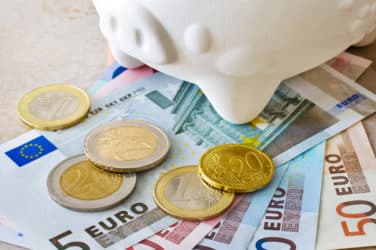The more things change, the more they stay the same.
While the exchange landscape looks different these days with fewer exchange operators than eight years ago, some things still are constant – such as the battle for order flow and payment of rebates to get it. However, these days rebates and payment for order flow are hot topics around Wall Street, regulators and academia. Such that the word “rebate” has taken on a negative connotation in conversations.
And the U.S. Securities and Exchange Commission is leading the way to see whether or not these payments or rebates actuallly do affect order routing decisions, as many detractors of the rebate system contend. Currrently they are initiating a pilot program to ascertain the role of rebates and the possibility of eliminating them altogether.
In a recent blog post, market veteran Jeff Bacidore of the Bacidore Group wrote that many on the buyside view the proposal favorably, noting that both would reduce the incentives of brokers to route orders to high rebate venues. Critics have noted the pilot could lead to increased spreads and/or decreased depths due to reduced incentives to provide liquidity. Plus, implementing the pilot involves adding complexity to an already extremely complex marketplace. And from a competitive perspective, leaving dark pools and other non-exchange entities out of the pilot puts them at a relative advantage in pilot stocks, which could have a detrimental effect on price discovery as volume shifts to off-exchange venues.
But he then asks, “Can rebates actually help align broker and client incentives?”
“While much has been made of the adverse incentive effects rebates have on broker routing, relatively little attention has been paid to the potential beneficial aspects of rebates on broker incentives. Specifically, in the same way rebates give market makers greater incentives to provide liquidity, rebates provide brokers with similar incentives to provide liquidity via greater use of passive “make” orders relative to aggressive “take” orders,” Bacidore says. ” A key consequence of increased passive trading is the potential for better fill prices for clients, leading to more favorable performance on average.”
An example of this, he continues, can be seen in the context of algorithmic trading. Algorithms often have discretion over the mix of “make” and “take” child orders they send out to execute a parent order. To the extent that rebates incentivize brokers to trade passively via “make” orders, they can indirectly result in improved algo performance if the “bias” toward passive pricing leads to better fill prices and reduced market impact.[3] Contrast this to a child order pricing strategy where “make” and “take” orders have identical exchange fees. In that setting, a broker would essentially be indifferent from a fee perspective between sending “make” or “take” orders. And when other incentives are taken into account, the broker may actually prefer aggressive “take” orders over passive “make” orders since “take” orders generate commissions for the broker with certainty, while an unfilled “make” orders generate no commissions.
Will this favorable incentive go away if the SEC bans rebates?
“It should be noted that a “make” rebate is not entirely necessary for a broker to be incentivized to use passive “make” orders. All that is required is that the cost of a “take” order exceed the cost of a “make’ order,” Bacidore says. “Of course, the magnitude of the difference has an impact on the strength of the incentive. Eliminating rebates and/or reducing the fee cap would shrink the difference between the “make” and “take” fees, thereby reducing – but not eliminating – the incentive for brokers to prefer “make” orders to “take” orders.
But these incentives alone may not be enough to improve performance, he concludes.
Chris Montagnino, Managing Director, Compliance Services at Jordan and Jordan pointed to the new (and again delayed) Rule 606 as a by-product of the rebate and disclosure push put forth by the industry and regulators. He notes that when speaking of fees and rebates, the new 606(b) requirements mandate that firms provide the average net fees/rebates paid to or received from a particular venue during the reporting period, as well as the specific fee/rebate average attributable to orders providing or taking liquidity. Given that we now know the expectations concerning discretion and venues, how are firms to distinguish fees/rebates amongst the various types of venues? The answer is that firms must do the following:
- associate any commission-related costs paid to their SOR/algo partners with such venues as primary routing venues on the 606(b) report; and
- associate any exchange fees passed back to them by their SOR/algo partners with the exchange venues listed on their 606(b) report as execution venues.
He explains that for further clarity, in a cost-plus arrangement between Broker A and Broker B, Broker B must pass back to Broker A specific detail on commissions per transaction and exchange fees/rebates per transaction such that Broker A can take that detail, aggregate it and report it against the appropriate venues on its 606(b) report. Again, what does this mean practically to our Broker A and Broker B? Broker B has some work to do (potentially) to provide the explicit detail on a per transaction basis to Broker A regarding commission/fees as well as pass back any client/order ID detail so that Broker A may associate the detail to particular clients (or alternatively compile the statistics on a client or order ID basis and pass it back). Broker A or Broker A’s vendor must develop processes to take in the additional data, perform the necessary calculations and report the information upon request by the client.
“Finally, the SEC’s recently published FAQs provided answers to certain data specific questions around the liquidity aspects of the reporting requirements and orders that are further routable,” Montagnino says. “The SEC staff confirmed that there can be orders that neither provide nor take liquidity and such activity will not be included in the liquidity specific sections of the 606(b) report. Additionally, with regard to orders that provided liquidity, the guidance for measuring the time between order entry and execution/cancellation is to begin with the time routed to the venue and either the ultimate cancellation or last execution of that order. Last but not least, orders are only to be considered not further routable if there is a specific order type/instruction that prohibits the further routing of the order, plain and simple.”
In the end, the rebate debate continues. Montagnino encourages firms to now move forward with their development efforts and discussions internally or engage with their vendors to ensure that appropriate information is sourced and processes are in place for reporting.
“The 606 arena is a whole lot more complicated than it was in the past. At Jordan & Jordan, we have actively engaged with our 606 clients and their executing brokers to explain the breadth of the new requirements, the FAQs and SEC staff expectations,” he says. “We continue to follow this space closely…”
And so should you.
This article originally appeared in the September 2011 edition of Traders Magazine
By John D’Antona Jr. and James Armstrong
When the going gets tough, the tough slash prices.
In the case of the nation’s stock exchanges, that means increasing rebates. With volume slumping, exchange operators are pulling out all the stops to reel in the big trading firms.
Volume in the first half of the year averaged 7.5 billion shares per day, down 20 percent from the same period last year. In July, the trend continued, as average daily volume slipped to 7 billion shares.
It is the brokers who supply those shares, so the exchanges must adapt to their straitened circumstances. In effect, that has meant paying them more for less.
In the current malaise, the exchanges are introducing new rebate programs and sweetening the terms of existing programs. They are adding new rebate tiers, reducing volume thresholds and, simply, increasing rebates.
Since January, the major exchange operators-NYSE Euronext, Nasdaq OMX Group, BATS Global Markets and Direct Edge-have introduced seven new rebate programs and improved the terms of five older programs.
“The good news for the Street is that rate competition is as intense as ever,” said Bryan Harkins, chief operating officer at Direct Edge. “It’s helping to offset some of the market volume challenges.”
Consider the changes in July alone. In that month, NYSE Arca introduced a new “step-up” rebate program that rewards traders who post more in a given month than they did in June. At the same time, Direct Edge’s EDGX exchange reduced the threshold for its highest rebate from an average 38 million shares to 20 million shares per day. Also in July, Nasdaq permitted its members to consolidate the trading of their affiliates in order to reach higher rebate tiers. Finally, BATS Global Markets’ BZX exchange tiered its rebate for the first time ever.
The situation harkens back to the 2007-2008 period of the first rebate war. Then exchanges and ECNs jacked up their payments by as much as 50 percent to within a penny of their take rates. That, in turn, left them with razor-thin spreads and heavily reliant on market data fees.
Spreads are coming under pressure this year, as well. Despite the moves on the rebate front, the exchanges are mostly not increasing their take fees. That’s because most take rates are either at or bumping up against the federally mandated access fee cap of 30 cents per 100 shares.
By contrast, the top rebate at many of the exchanges has been moving steadily higher this year. At 34 cents per 100 shares, EDGX now has the highest. NYSE Arca is not too far behind, with a rebate of 32 cents for every 100 shares of displayed liquidity. For both exchanges, their highest rebates are greater than their highest take fees.
At the same time, tier thresholds are coming down. Before this year, to qualify for an exchange’s highest rebate, a broker had to post about 50 million shares per day, on average. Now, under one exchange program anyway, brokers can grab the brass ring with only 8 million or 9 million shares.
“Exchanges are trying to maximize their revenues,” said John Jacobs, chief operating officer at Lime Brokerage. “What does it mean to lower a tier threshold? It’s effectively a price cut. If they need to cut prices to attract more volume, then that’s what they will do.”
Bettering a rebate program’s terms, however, may not translate into sustained levels of higher volume, pros note. While the exchange with the better deal might experience a sudden influx of orders, the gusher could peter out. If traders don’t experience better fill rates at the newly cheaper venue, they may go back to where they came from.
“When a price change goes into effect, there may be an immediate blip as a result of brokers’ automated reweightings,” explained Shane Swanson, a partner and general counsel at Eladian Partners, a proprietary trading house. “But if that blip isn’t sustainable, because the liquidity profile isn’t as advantageous, the situation will change again.”
Also, most trading executives tell Traders Magazine the rebate is only one factor in their routing decisions, and typically not the most important one. Of greater importance is the “liquidity profile” of a venue. That is a measure of the quantity and quality of liquidity at a given market center. It considers fill ratios, adverse selection and the impact of high-frequency traders.
This is especially true for those brokers handling institutional orders. “The quality of the execution matters the most,” said Jamie Selway, a managing director at Investment Technology Group. “You want to maximize liquidity and accomplish a quality fill.” He added, however, that if two or more venues are offering the same fill quality, the better rebate will break the tie.
One size fits all
Until recently, most rebate programs offered by exchange operators were of the one-size-fits-all variety. They targeted anyone willing to post liquidity. The more the broker posted, the more it received.
There were exceptions, of course. Both BATS and Nasdaq have experimented with rewarding traders for quoting in size, for example. Also, the creation of taker-maker exchanges, whereby liquidity providers are charged and takers are rebated, was a significant departure from business as usual.
But the vast majority of the business is still done on maker-taker exchanges, and their programs have largely been plain vanilla. That began to change late last year as the exchanges began to supplement their standard pricing programs with new ones that targeted specific audiences or behaviors.
Most exchange rebate programs have been-and still are-geared toward market makers and high-frequency trading shops. These firms provide the public markets with the lion’s share of liquidity. Conventional institutional brokers typically take more liquidity than they add and thus are more concerned about access fees. In addition, most of these players say exchange pricing is of less concern than liquidity when routing their customers’ orders.
Now Nasdaq and Arca have launched new initiatives meant to appeal to traditional brokers. In November, Nasdaq launched its “Investor Support Program” to draw orders away from dark pools and wholesalers. NYSE Arca copied the program in June. Both schemes seek high-quality mom-and-pop flow and bar participation by high-frequency traders, or firms with high numbers of canceled orders.
Behind the moves are the concerns of two sets of exchange customers. Because of the downturn in volume, high-frequency traders, a core exchange constituency, are increasingly trading against the quotes of their own kind when they would prefer to interact with institutional and retail flow. Also, institutional brokers are closely scrutinizing the quality of the liquidity with which their customers interact. These factors put pressure on the exchanges to diversify their liquidity beyond market-maker/HFT quotes.
“They are looking to add more flow to their platforms that is not high-frequency in nature,” explained Pankil Patel, managing director of trading for Credit Suisse’s Advanced Execution Services.
“It is important for them to get a good mix of flow in the door. These incentive programs are an attempt to attract our liquidity so we place more of it on their venues.”
Significantly, both Nasdaq’s and Arca’s programs offer better terms to the firms that qualify than do their standard programs. Firms get more rebate bucks for the same or fewer shares.
Under Nasdaq’s plan, a qualifying broker is paid two rebates: the exchange’s standard plus a small ISP rebate. To qualify for the ISP rebate, a member must add more liquidity in a given month than it did in the baseline month of August 2010. Its rebate is based on the number of additional shares posted.
Originally a one-tier program, Nasdaq expanded it this year, adding two more tiers. The exchange will now pay 3, 4 or 5 cents per 100 shares, depending on how much volume a firm adds over its baseline.
NYSE Arca’s program is similar to Nasdaq’s, but less convoluted. Rather than offering two rebates-a standard and a sweetener-Arca simply offers one. Traders get a 32-cent rebate-now Arca’s highest-if they post at least 35 million shares per day. They get 30 cents if they post between 10 million and 35 million shares.
The deal is better than Arca’s standard program. There, the highest rebate is only 30 cents and traders must post about 50 million shares per day (based on July 2011 volume levels) to qualify.
Neither exchange would say how successful their programs have been. But at the end of July, the amount of offboard trading was roughly where it stood when Nasdaq started its program nine months earlier. Nasdaq’s market share, however, has increased this year.
In May, Nasdaq tried another strategy to reel in retail and institutional brokers. Because these players are typically large takers-rather then providers-of liquidity, Nasdaq sought to reward them for their taking. Under the initiative, firms that take more than 0.65 percent of total consolidated volume and supply at least 2 million shares per day will get a 29-cent rebate on the displayed shares. Firms that take more than 0.45 percent of TCV and supply at least 2 million shares will get a 25-cent rebate.
The deal represents a considerable price cut for Nasdaq. Under its standard program, to get a 25-cent rebate, firms must post at least 20 million shares. To get its 29-cent rebate, firms must post 0.45 percent of TCV, or more than 30 million shares, based on July volume levels.
An executive with one big broker told Traders Magazine that the Nasdaq initiative was helpful. Despite the high threshold, the exec said, the program gave the firm a shot at a higher rebate. That was not possible in the past.
Smaller suppliers
Besides using special rebate programs to appeal to nontraditional players, the exchanges are also crafting programs to capture smaller suppliers or new customers.
While Arca chose not to base its rebate on the growth in a member’s posted volume for its Investor Tiers program, it did embrace the concept for its new “step-up” program. Arca launched the two-tiered program in July. It targets smaller and newer customers that might not qualify for the rebates in Arca’s other two programs.
Under the program, a firm must post more liquidity in a given month than it did in the baseline month of June 2011. Arca will pay 29.5 cents to firms exceeding their baseline levels by 0.15 percent of TCV. It will pay 29 cents to firms exceeding their baseline levels by 0.1 percent of TCV.
The deal potentially offers better terms than Arca’s standard program. Under the rules, a firm must post a minimum of 15 million shares in excess of their baselines to qualify for the exchange’s highest rebate. But the baseline itself has no minimum. That means a firm could simply post 15 million shares and qualify for the highest rebate. That compares favorably against Arca’s standard volume threshold of about 50 million shares necessary to earn the highest rebate.
Direct Edge launched a similar program in March on its EDGX platform, as a way for a trading firm to qualify for its Mega Tier rebate of 32 cents. Initially, a member had to post 15 million shares more than it did in the baseline month of February. To qualify, a firm had to have done at least 1 million shares in February.
The economics were considerably better than those of EDGX’s standard rebate program, where firms must post 0.75 percent, or more than 50 millions shares per day, based on July volume levels, to qualify for the Mega Tier rebate.
“As with any consumer business, we are offering price discounts for new customers-customers who are coming from a competitor,” Harkins explained. “Traditionally our rate cuts have rewarded fixed volume or liquidity provision over a period of time, but this is rewarding growth.” The exec added that the program should appeal to both large and small firms, both new and old customers.
To broaden the program’s appeal, EDGX later chopped that 15 million-share threshold down to 0.12 percent of TCV. That was about 8.4 million shares per day based on July’s volume. The exchange also eliminated the million-share baseline minimum. And to make it even easier for smaller suppliers to participate, EDGX added a second tier. From July, it began paying traders a 29-cent rebate if they exceeded their February baseline by 0.065 percent of monthly TCV. That was only 4.5 million shares at then-current levels.
The step-up programs don’t work for everybody. Lime, for example, offers its customers self-directed routing. The high-frequency traders route their orders to whichever venue suits them at the moment. That precludes Lime from steering its orders to a single exchange. “In the world of high-frequency trading,” Jacobs said, “you really need to have access to all markets. If you hit the step-up volume level, it’s really more from happenstance than intent.”
BATS’s Shift
While Direct Edge is an inveterate tinkerer, revising its price schedule every month, BATS has traditionally kept things simple. For most of its existence BATS had only one pricing plan and no tiering. It boasted of its “flat” pricing model, and its aversion to the programs of its competitors that rewarded the biggest traders at the expense of the smaller ones. That has all changed.
In July, BATS tiered the rebate on its flagship BZX exchange. Now, for those traders that post 1 percent of TCV, or 70 million shares per day at July levels, BZX will pay its highest rebate of 29 cents per 100 shares. If they post at least half that, BZX will pay 27 cents, previously its standard rebate. The lowest rebate is now 25 cents.
Tiering generally works to the advantage of the largest players. That’s because they earn more on every share than they did before tiering. At BATS, for instance, a firm supplying 70 million shares per day received 27 cents before tiering. Now it gets 29 cents.
As part of the restructuring, BZX launched a new program with an additional rebate. The so-called “NBBO Setter” program was originally deployed in BATS’s options marketplace, where it was a “hit,” according to chief executive Joe Ratterman. The goal of the program is to encourage firms to post large amounts of liquidity, and also to tighten up the exchange’s markets by establishing the national best bid or offer.
Sweetener
The heart of the program is a sweetener rebate similar to the one Nasdaq offers in its Investor Support Program. To qualify for the add-on, a member must post a daily average of at least 0.5 percent of monthly TCV in liquidity and set the NBBO.
If it does, a firm will receive 2 cents on top of BZX’s best or second-best rebate. For the largest traders, that means 31 cents. It is the highest rebate in the Kansas City, Mo.-based exchange’s history, and reflects a rebate “creep” at BZX that began late last year.
In a note to customers, chief executive Joe Ratterman called the introduction of NBBO Setter a “paradigm shift” for the exchange operator, as it had previously stuck with an untiered pricing model. Ratterman claimed the move was not about rewarding the biggest shops. “We aren’t just directing better economics to clients because of their size,” he told members. “We are also directing incentives to them based on their actions, specifically those actions that can actually improve market quality.”
More Tiers
BZX isn’t the only exchange to tier an older program this year. Back east, both Nasdaq and the NYSE have also tiered long-standing programs. In January, the New York Stock Exchange introduced tiered pricing for a key group of trading firms, the so-called Supplemental Liquidity Providers.
There are 10 SLPs. They include major market makers such as Tradebot Systems, Virtu Financial, Hudson River Trading, Getco, Citadel Securities and Knight Capital Group. They wield enormous influence with all exchanges, as they are significant suppliers of liquidity. Knight and Citadel have stakes in Direct Edge, for instance. Tradebot and Getco own pieces of BATS.
Before January, all SLPs got the same amount: 13 cents per 100 shares. To make quoting on the NYSE more attractive, the exchange boosted its lowest rebate to 15 cents and added three tiers. The traders, which provide about 15 percent of the exchange’s liquidity, can now earn between 20 and 22 cents, depending on how much volume they contribute. To get the highest rebate, they need to post 50 million shares per day, on average.
As for Nasdaq, it tiered a rebate program that rewards big traders on both its flagship stock market and the Nasdaq Options Market. The pricing program, begun in 2009, previously paid traders a 29-cent rebate if they posted 25 million shares on Nasdaq and traded 200,000 options contracts on NOM. Since April, Nasdaq has added two tiers to the program, a 25-cent and a 29.5-cent rebate. In addition, Nasdaq reduced the thresholds necessary to qualify for the 29-cent rebate. Firms now need only post 0.15 percent of TCV, or about 10 million shares at July’s volume levels, and trade 115,000 options contracts.
The Impact
So what’s been the impact of all this maneuvering around rebates on the exchanges themselves? If more rebating is good news for brokers, is it bad news for the exchange’s financial health? And what about market share? Who’s up? Who’s down?
Only about 70 percent of industry volume ever reaches the exchanges. The balance is traded by brokers internally. Of that volume that is available to them, the five largest maker-taker exchanges control about 85 percent. That was the situation in July as well as December 2010.
Perhaps it’s not surprising that the most aggressive cost-cutters have seen upticks in their market shares. The others have seen their shares decline.
Between December and July, Nasdaq, BZX and EDGX saw their shares of the pie grow. The New York Stock Exchange and Arca experienced declines (see table).
Paying for market share comes at a cost, however. In last year’s fourth quarter, Nasdaq earned $37 million in net revenues attributable to U.S. cash equity trading. It made slightly less-$36 million-in this year’s second quarter. Net revenues are the difference between what an exchange takes in and what it pays out.
By contrast, NYSE Euronext earned $47 million in U.S. stock trading net revenues in last year’s fourth quarter. It netted $51 million in this year’s second quarter.
Those figures are not perfect reflections of the share-matching game as they include routed shares as well. Also, they do not include market data revenues, a significant revenue source.
Despite Direct Edge’s aggressive pricing habits, Harkins says the exchange operator does not run its business at a loss and strives to bring as many traders to its platform as possible.
“There are other ways to monetize people coming to your exchange,” he said. “That’s why you’re seeing exchanges diversify. Size and legitimacy and being a place for price discovery are really essential for that strategy.” Direct Edge tries to steer its customers into ancillary services such as its connectivity program, Harkins added.
Whether or not the exchanges will keep up the intense level of rebate competition remains to be seen. But at least one analyst believes prices have only one direction to go, and that’s up.
Diego Perfumo, a financial analyst with Equity Research Desk, maintains that market share gains from aggressive pricing are easily lost. He points to Nasdaq’s beating in recent years at the hands of BATS and Direct Edge. Nasdaq made market share gains in NYSE-listed securities at the expense of the Big Board after Regulation NMS went into effect, but later saw them siphoned away by the two upstarts. [IMGCAP(4)]
“If we continue to see this anemic volume,” Perfumo said, “you will see prices going up. Either that or they won’t be making any money at all and will have to get out of the business.”






